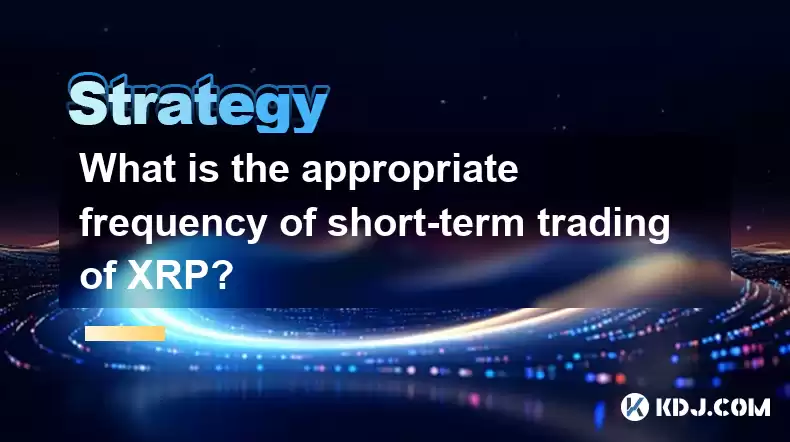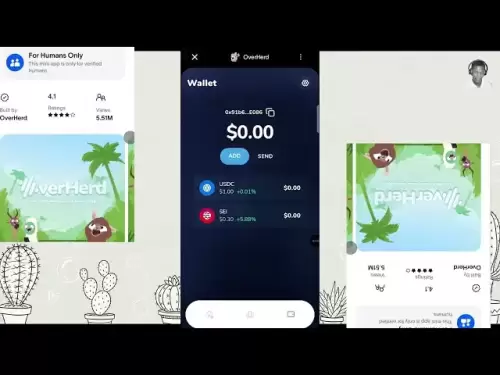-
 Bitcoin
Bitcoin $114500
-0.31% -
 Ethereum
Ethereum $3648
1.11% -
 XRP
XRP $3.033
-0.27% -
 Tether USDt
Tether USDt $0.9999
-0.01% -
 BNB
BNB $758.5
-0.32% -
 Solana
Solana $167.5
1.48% -
 USDC
USDC $0.9998
-0.02% -
 TRON
TRON $0.3331
0.74% -
 Dogecoin
Dogecoin $0.2039
0.25% -
 Cardano
Cardano $0.7419
-0.46% -
 Hyperliquid
Hyperliquid $39.21
2.66% -
 Stellar
Stellar $0.4049
-1.95% -
 Sui
Sui $3.483
-0.56% -
 Bitcoin Cash
Bitcoin Cash $570.8
2.89% -
 Chainlink
Chainlink $16.67
-0.57% -
 Hedera
Hedera $0.2470
-1.57% -
 Ethena USDe
Ethena USDe $1.001
0.00% -
 Avalanche
Avalanche $22.36
1.52% -
 Litecoin
Litecoin $123.4
4.35% -
 UNUS SED LEO
UNUS SED LEO $8.989
0.09% -
 Toncoin
Toncoin $3.324
-2.40% -
 Shiba Inu
Shiba Inu $0.00001219
-1.30% -
 Uniswap
Uniswap $9.811
2.54% -
 Polkadot
Polkadot $3.662
-0.07% -
 Monero
Monero $295.5
-3.85% -
 Dai
Dai $1.000
0.01% -
 Bitget Token
Bitget Token $4.345
0.24% -
 Cronos
Cronos $0.1380
0.95% -
 Pepe
Pepe $0.00001044
-1.14% -
 Ethena
Ethena $0.5981
-4.24%
What is the appropriate frequency of short-term trading of XRP?
For XRP, short-term trading frequency depends on strategy: scalpers may trade 10-50 times daily, day traders 5-10 times, and swing traders 1-5 times weekly.
Apr 21, 2025 at 01:49 pm

What is the appropriate frequency of short-term trading of XRP?
Short-term trading of XRP, like any cryptocurrency, involves a delicate balance of timing, market analysis, and risk management. The appropriate frequency of trading XRP can vary significantly depending on individual trading strategies, market conditions, and personal risk tolerance. In this article, we will explore various factors that influence the ideal trading frequency for XRP and provide insights into how traders can optimize their approach.
Understanding Short-Term Trading
Short-term trading, often referred to as day trading, involves buying and selling assets within a short period, typically within the same day or over a few days. The goal is to capitalize on small price movements to generate profits. For XRP, short-term trading can be particularly appealing due to its volatility and liquidity. However, this also means that the market can be unpredictable, requiring traders to be vigilant and responsive.
Factors Influencing Trading Frequency
Several factors can influence how often you should trade XRP. These include market volatility, trading strategy, time commitment, and risk tolerance.
Market Volatility: XRP, like other cryptocurrencies, can experience significant price swings within short periods. High volatility can create more trading opportunities but also increases the risk. Traders need to assess the current market conditions to determine if frequent trading is beneficial.
Trading Strategy: Different trading strategies have different requirements for trading frequency. Scalping, for instance, involves making numerous trades throughout the day to profit from small price changes. In contrast, swing trading might involve holding positions for a few days to weeks, resulting in fewer trades.
Time Commitment: Short-term trading requires a significant time investment. Traders need to monitor the market continuously, analyze data, and execute trades promptly. Those with limited time may find it challenging to maintain a high trading frequency.
Risk Tolerance: Frequent trading can amplify both potential profits and losses. Traders with a lower risk tolerance might prefer to trade less frequently to minimize exposure to market fluctuations.
Recommended Trading Frequencies for Different Strategies
The appropriate frequency of trading XRP can vary based on the trading strategy employed. Here, we outline recommended trading frequencies for different approaches:
Scalping: Scalpers aim to make numerous trades throughout the day, often holding positions for just a few minutes. For XRP, scalpers might trade 10 to 50 times per day, depending on market conditions and the trader's ability to identify profitable opportunities.
Day Trading: Day traders buy and sell XRP within the same trading day, typically holding positions for a few hours. A day trader might execute 5 to 10 trades per day, focusing on larger price movements than scalpers.
Swing Trading: Swing traders hold positions for several days to weeks, aiming to capitalize on medium-term price trends. For XRP, swing traders might trade 1 to 5 times per week, depending on market trends and their analysis.
Position Trading: Position traders take a long-term approach, holding positions for weeks to months. For XRP, position traders might trade once every few weeks or months, focusing on significant market trends rather than short-term fluctuations.
Tools and Techniques for Optimizing Trading Frequency
To optimize the frequency of trading XRP, traders can utilize various tools and techniques. These include technical analysis, trading bots, and risk management strategies.
Technical Analysis: Using charts, indicators, and patterns to analyze XRP's price movements can help traders identify optimal entry and exit points. Tools like moving averages, RSI, and MACD can provide insights into market trends and potential reversals.
Trading Bots: Automated trading bots can execute trades based on predefined criteria, allowing traders to maintain a high trading frequency without constant manual intervention. Bots can be particularly useful for strategies like scalping, where quick execution is crucial.
Risk Management: Implementing strict risk management rules can help traders maintain an appropriate trading frequency. This includes setting stop-loss orders, limiting the size of each trade, and diversifying the trading portfolio to mitigate risk.
Practical Steps for Determining Your Trading Frequency
Determining the appropriate frequency of trading XRP involves a systematic approach. Here are practical steps to help traders find their optimal trading frequency:
Assess Your Trading Goals: Clearly define what you aim to achieve through trading XRP. Are you looking for quick profits through scalping, or do you prefer to capitalize on longer-term trends?
Evaluate Your Time Availability: Consider how much time you can realistically dedicate to trading. High-frequency strategies like scalping require constant monitoring, while swing trading allows for more flexibility.
Analyze Market Conditions: Stay informed about XRP's market conditions, including volatility, trading volume, and news events that could impact its price. Adjust your trading frequency based on these factors.
Start with a Demo Account: Before committing real funds, practice trading XRP on a demo account. This allows you to test different trading frequencies and strategies without financial risk.
Monitor and Adjust: Continuously monitor your trading performance and adjust your frequency as needed. If you find that frequent trading leads to stress or poor decision-making, consider reducing the number of trades.
Keep a Trading Journal: Document your trades, including the frequency, outcomes, and any lessons learned. This can help you refine your approach over time and identify the most effective trading frequency for your style.
Common Pitfalls to Avoid
When determining the appropriate frequency of trading XRP, it's essential to be aware of common pitfalls that can undermine your success. These include overtrading, emotional trading, and neglecting risk management.
Overtrading: Trading too frequently can lead to exhaustion and poor decision-making. It's crucial to find a balance that allows you to maintain focus and discipline.
Emotional Trading: Allowing emotions like fear or greed to drive your trading decisions can result in impulsive trades and significant losses. Stick to your trading plan and avoid making decisions based on short-term market fluctuations.
Neglecting Risk Management: Failing to implement proper risk management can expose you to unnecessary losses. Always use stop-loss orders and never risk more than you can afford to lose.
Frequently Asked Questions
Q: Can I trade XRP on weekends, and how does this affect trading frequency?
A: Yes, you can trade XRP on weekends, but the trading volume and liquidity may be lower compared to weekdays. This can impact your trading frequency, as fewer opportunities may be available. It's essential to adjust your strategy accordingly and be aware of potential price gaps when markets reopen.
Q: How does the use of leverage affect the frequency of trading XRP?
A: Leverage can amplify both gains and losses, potentially leading to more frequent trading as traders seek to capitalize on small price movements. However, it also increases risk, so it's crucial to use leverage cautiously and adjust your trading frequency to manage this risk effectively.
Q: Are there specific times of the day that are better for trading XRP?
A: Trading volumes for XRP tend to be higher during certain times, such as when major markets like the U.S. and Asia are open. These periods can offer more trading opportunities, potentially increasing your trading frequency. However, it's important to analyze historical data and current market conditions to identify the best times for your strategy.
Q: How can I balance trading XRP with other cryptocurrencies to optimize my trading frequency?
A: Diversifying your trading portfolio across different cryptocurrencies can help you manage risk and potentially increase trading opportunities. By monitoring multiple assets, you can adjust your trading frequency based on which cryptocurrencies are showing the most promising trends. However, ensure that you have the time and resources to effectively manage multiple trades.
Disclaimer:info@kdj.com
The information provided is not trading advice. kdj.com does not assume any responsibility for any investments made based on the information provided in this article. Cryptocurrencies are highly volatile and it is highly recommended that you invest with caution after thorough research!
If you believe that the content used on this website infringes your copyright, please contact us immediately (info@kdj.com) and we will delete it promptly.
- XRP, DOGE, and the Altcoin Darling Dilemma: Where's the Alpha?
- 2025-08-06 08:30:11
- Beatrix Potter 50p Coins on eBay: A Collector's Guide to Value and Rarity
- 2025-08-06 08:50:12
- Dogecoin Price Outlook 2025: Barking Up the Right Tree?
- 2025-08-06 08:35:17
- Floki Price Super Cycle Watch: Key Support Holds, Will the Viking Dog Fly?
- 2025-08-06 08:50:12
- Executive Order vs. Financial Institutions: Is Political Bias the New Normal?
- 2025-08-06 08:55:11
- China, DeepSeek AI, and Crypto Prices: Decoding the Future of XRP, SHIB, and PEPE
- 2025-08-06 09:00:13
Related knowledge

How to avoid common crypto investment mistakes?
Jul 13,2025 at 01:35am
Understanding the Risks of Crypto InvestmentInvesting in cryptocurrency can be highly rewarding, but it also comes with significant risks. One of the ...

What is a long-short crypto strategy?
Jul 15,2025 at 10:56am
Understanding the Basics of a Long-Short Crypto StrategyA long-short crypto strategy is an investment approach where traders simultaneously take long ...

What is a long-short crypto strategy?
Jul 11,2025 at 01:28pm
Understanding the Basics of Long-Short Crypto StrategyA long-short crypto strategy is an investment approach where traders take both long and short po...

How to use the RSI indicator for crypto?
Jul 12,2025 at 03:56pm
Understanding the RSI Indicator in Cryptocurrency TradingThe Relative Strength Index (RSI) is a momentum oscillator used to measure the speed and chan...

Is copy trading a good strategy for crypto beginners?
Jul 12,2025 at 08:28am
Understanding Copy Trading in the Cryptocurrency MarketCopy trading is a strategy where novice traders replicate the trades of experienced investors a...

How to build a crypto portfolio with $1000?
Jul 13,2025 at 08:14pm
Understanding the Basics of Cryptocurrency InvestmentBuilding a crypto portfolio with $1000 starts with understanding the fundamentals of cryptocurren...

How to avoid common crypto investment mistakes?
Jul 13,2025 at 01:35am
Understanding the Risks of Crypto InvestmentInvesting in cryptocurrency can be highly rewarding, but it also comes with significant risks. One of the ...

What is a long-short crypto strategy?
Jul 15,2025 at 10:56am
Understanding the Basics of a Long-Short Crypto StrategyA long-short crypto strategy is an investment approach where traders simultaneously take long ...

What is a long-short crypto strategy?
Jul 11,2025 at 01:28pm
Understanding the Basics of Long-Short Crypto StrategyA long-short crypto strategy is an investment approach where traders take both long and short po...

How to use the RSI indicator for crypto?
Jul 12,2025 at 03:56pm
Understanding the RSI Indicator in Cryptocurrency TradingThe Relative Strength Index (RSI) is a momentum oscillator used to measure the speed and chan...

Is copy trading a good strategy for crypto beginners?
Jul 12,2025 at 08:28am
Understanding Copy Trading in the Cryptocurrency MarketCopy trading is a strategy where novice traders replicate the trades of experienced investors a...

How to build a crypto portfolio with $1000?
Jul 13,2025 at 08:14pm
Understanding the Basics of Cryptocurrency InvestmentBuilding a crypto portfolio with $1000 starts with understanding the fundamentals of cryptocurren...
See all articles

























































































